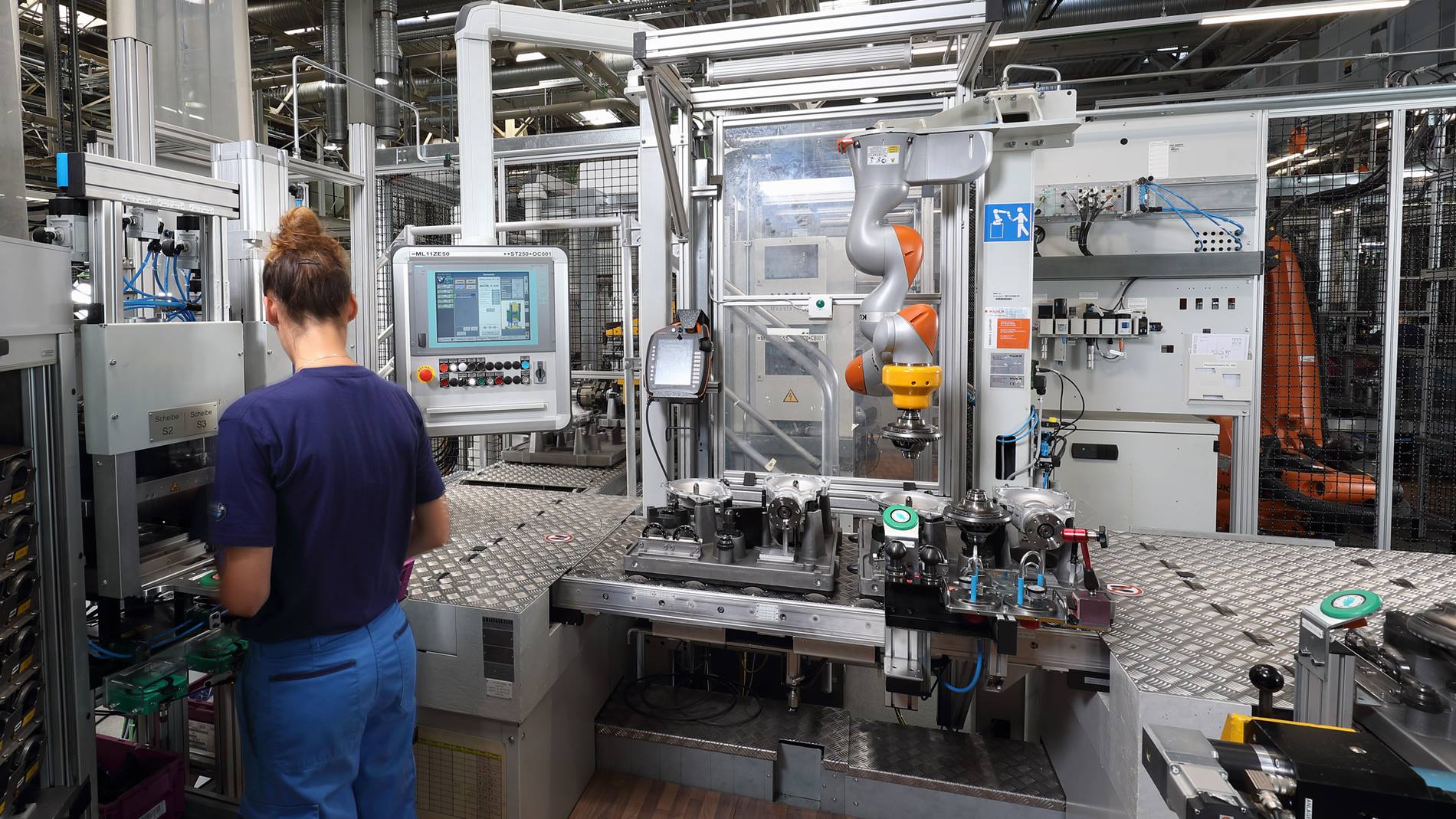The solution developed by KUKA systems: A slim steel construction in the form of a gallows, to which the LBR iiwa is fixed. This saves space because the sensitive lightweight robot can work suspended. External sensors are not required as the LBR iiwa has joint-torque sensors in each of its seven axes. In addition, the gripper has been provided with an edge-free and rounded HRC sheath, so that the end effector is also capable of protecting the worker against injury at any time. Furthermore the compact control cabinet accommodated the existing production line and provides an interface to the system control. Human and robot are now joining together the differential case for the front-axle – in less than half a minute.


